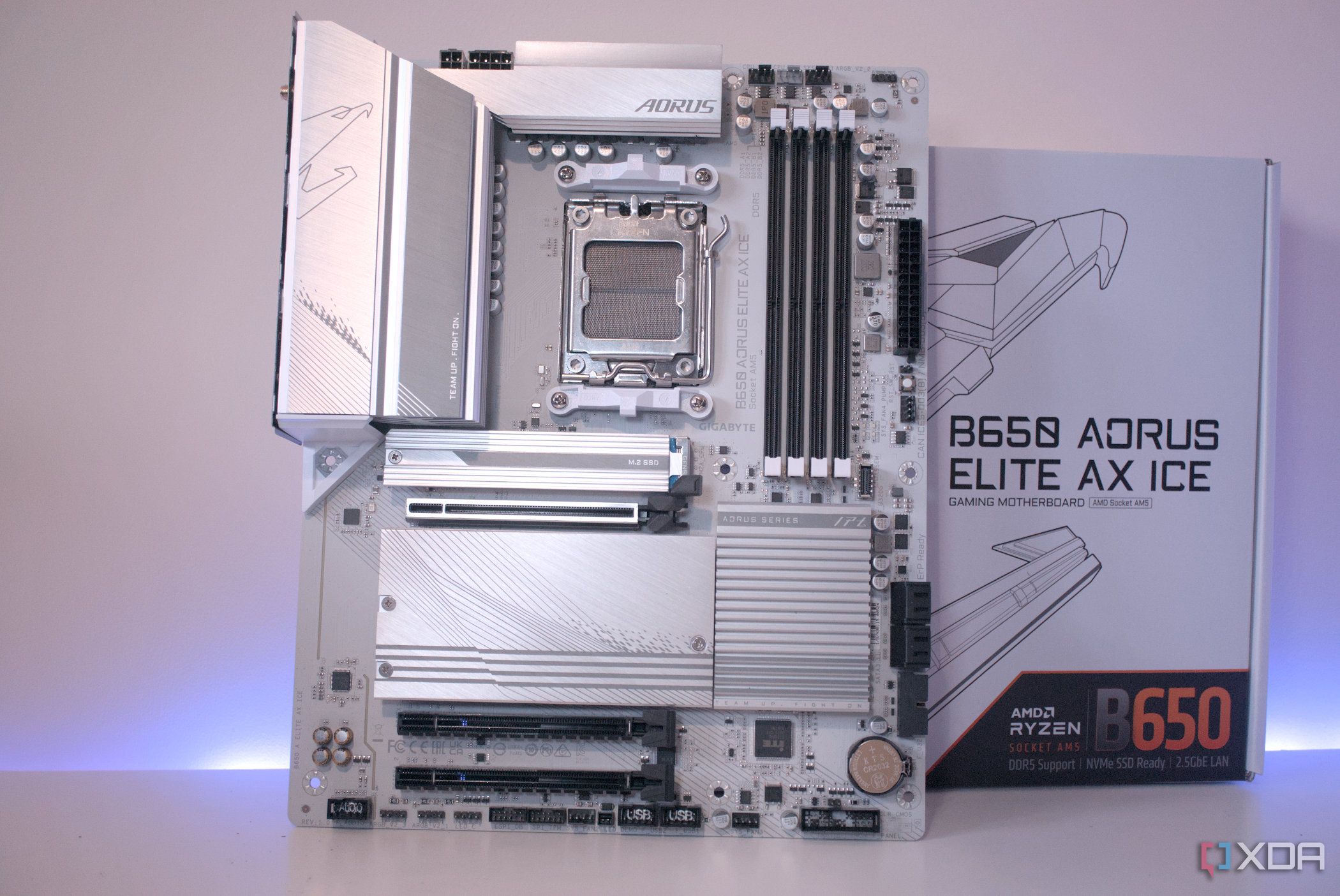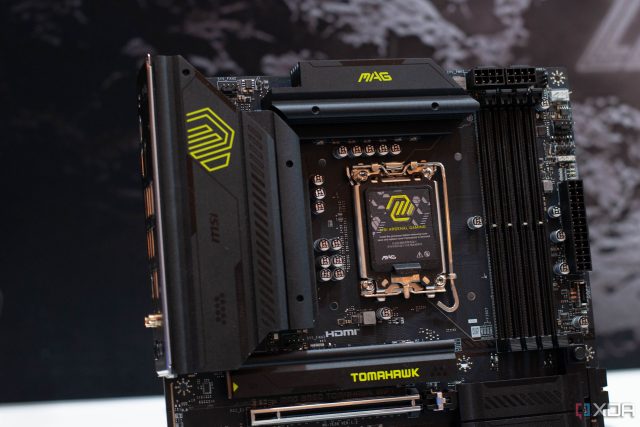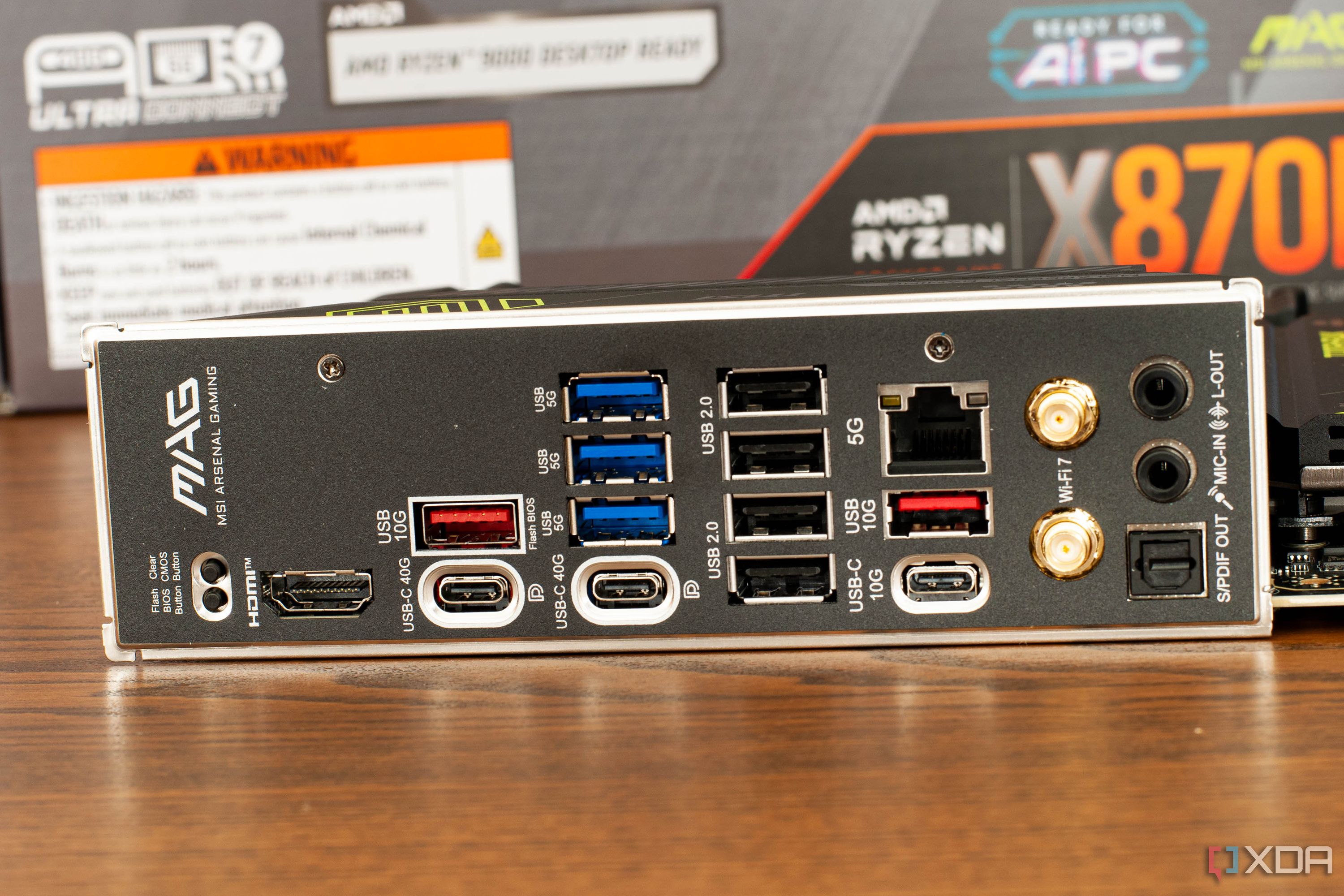Over the past five years, the budget for even a modestly equipped gaming PC that can keep up with today’s AAA titles has gone completely bananas. The expectation in the marketplace that we spend $1,000 or more on a GPU, $500 and above on CPUs, and another $1,000 on everything else has shattered the image of a gaming PC as accessible to the average consumer. It’s caused me to seriously reevaluate what I’m spending on PC components and what I’m getting for the price. Personally, I’ve had a recent revelation when it comes to motherboards.
Companies seem compelled to advertise motherboards that support dual GPUs I’ll never own, support for 10Gbps wired internet speeds I can’t afford, support DDR5 memory speeds I’ll never need, and much more. Those boards will be labeled the “flagship” model, with a $500 or even $1000 price tag. But a closer look at the “value” lineups of most major motherboard brands will reveal boards that have everything you could ever ask for, and are good enough for years of enjoyment. This is why I’ll never spend more than $300 on a motherboard ever again, and before the pedants get at me, I mean $300 in 2025 dollars.

Related
Bring your budget PC build to life with this top-rated Asus motherboard that’s now just $95
It’s time to get your new PC build started
3
You probably don’t need PCIe 5.0
PCIe 4.0 is more than enough for most users
When shopping for motherboards, you might notice that ~$200 boards like the Gigabyte B650 AORUS only support PCIe 4.0. This is one of the most common sacrifices you’ll be making as prices approach or dip below the $200 mark, but it’s not a sacrifice for most users. Let’s look at a perfect example of saving on one component to spend more on one that really matters. Let’s say you’ve splurged on an RTX 5090 and think it must surely need PCIe 5.0. Well, that’s not the case. In head-to-head hardware tests, the RTX 5090 sees a roughly 1–2% performance drop, if at all, when running on PCIe 4.0. So even if you’re buying the biggest, baddest GPU on the market, you still don’t need PCIe 5.0.
The same could be said for your SSD. While Gen 5 SSDs put up some impressive read/write numbers, the truth is that Gen 4 speeds are almost certainly more than enough for work and play. Speaking from first-hand experience, I installed my first Gen 5 SSD recently on my board, which supports PCIe 5.0 M.2, and I’ve noticed nary a difference. Maybe in the future, PCIe 5.0 will be leveraged more regularly by normal users, but for now, it’s something that can easily wait another PC build cycle and save you some money on your board.
2
More power phases than the Death Star
Are you overclocking the sun? How many power phases do you need?
Not overpaying for power phases is more about saving money than a realistic understanding of your needs. As an example, let’s look at AMD’s 9800X3D, which is widely considered the best CPU for gaming on the market today. User reports, benchmarks, and some back-of-the-napkin math can tell us that a VRM with just 10 dedicated CPU phases can sufficiently power the 9800X3D, though you may not want to enable settings like Precision Boost Overdrive (PBO). AMD locks out traditional manual overclocking on their 3D V-Cache chips, so there’s no need for an overpowered VRM designed to push a truckload of watts through the socket.
A motherboard like MSI’s B650M Mortar WiFi will run you $200 or less and sport a 12+2+1 power phase setup, which is more than enough for a 9800X3D with PBO enabled. Even if you were running a Ryzen 9950X and were interested in overclocking it, a $300 board like mine with a 14+2+1 setup would be just fine. Spending more on a 16- or 18-phase VRM is only necessary if you plan to do extreme all-core overclocking or custom cooling. Other than that, you’d just be overpaying for power you won’t be using.

Related
The only 8 features to care about on a new motherboard
Everything else will probably be there on a new motherboard
1
Rear I/O panels are getting out of control
Sorry, I left my 8K monitors and USB4 peripherals in my other Ferrari…
Look, I appreciate future-proofing as much as the next tech enthusiast, and I know it’s not uncommon for PC gamers to be running a keyboard, mouse, headset, speakers, and maybe a monitor or two, at least. I’m not saying there isn’t value in having a good number of USB-A ports on your board, but do I really need more than 10? Even my motherboard, which, mind you, is exactly $300, has 9 USB-A ports on the back ranging from USB 2.0 to 10 Gbps, with support for eight more USB-A ports should I buy a PC case that has that many on the front or top panel. By the way, all of that is before the 3 USB-C ports on the rear I/O panel as well.
I love my peripherals, and I currently have five USB-A ports being used. Two are for my keyboard since it offers USB passthrough, but takes up two USB-A ports to do so. The receiver for my wireless headset takes up one USB-C port, and I’ll occasionally plug my external SSD into another. That still leaves me with a free USB-C port and four free USB-A ports, and that’s not even counting the ones in my case.
If you are rocking an external SSD enclosure, really high-end audio recording equipment, or are for some reason trying to run an external GPU on your desktop, you might make use of 40Gbps USB speeds. However, the peripherals and products that even support those speeds are few and far between, and they remain prohibitively expensive for the average user. So if you’re convincing yourself you need to drop over $300 on a motherboard, it’s probably not because of the rear I/O panel.
Don’t let your motherboard throw off your PC build budget
If you are working on a limited budget, like most of us are, then your motherboard is absolutely not worth blowing your budget on. Aesthetics, overpowered VRMs, super-speed ports and slots, and a million USB ports are not worth sacrificing space in the budget that could go towards your CPU or GPU. Once you have your entire PC put together, and it’s running smoothly, showing off all its pretty RGB coming from fans, coolers, and possibly your GPU, I promise you won’t think, “Gee, I wish I spent twice as much on my motherboard.”












